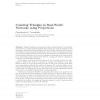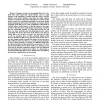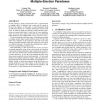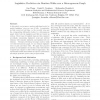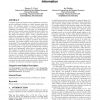773 search results - page 108 / 155 » A Computational Model of Social Perlocutions |
104
click to vote
KAIS
2011
14 years 4 months ago
2011
Triangle counting is an important problem in graph mining. Two frequently used metrics in complex network analysis which require the count of triangles are the clustering coefficie...
INFOCOM
2011
IEEE
14 years 1 months ago
2011
IEEE
Abstract—Computer systems are increasingly driven by workloads that reflect large-scale social behavior, such as rapid changes in the popularity of media items like videos. Capa...
123
click to vote
SIGECOM
2011
ACM
14 years 17 days ago
2011
ACM
In many settings, a group of agents must come to a joint decision on multiple issues. In practice, this is often done by voting on the issues in sequence. In this paper, we model ...
108
click to vote
SDM
2012
SIAM
13 years 5 days ago
2012
SIAM
In this article, we propose a random walk-based model to predict legislators’ votes on a set of bills. In particular, we first convert roll call data, i.e. the recorded votes a...
ATAL
2008
Springer
14 years 11 months ago
2008
Springer
Computer agents participate in many collaborative and competitive multiagent domains in which humans make decisions. For computer agents to interact successfully with people in su...
